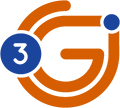Modern Transportation Management Systems Bring New Meaning to True Optimization
When it comes to transportation management system (TMS) capabilities, many companies are skeptical of optimization. And for good reason: Old-generation TMS systems required a bolted-on optimization engine which was often clumsy and rarely out-performed actual human route planners. But that’s changed with modern transportation management systems.
Modern TMS systems now offer optimization planning and execution now embedded and integrated to work together on a single platform, to create realistic loads that can actually be run, all while taking actual delivery constraints and dynamic order changes into account. Routes are complicated and constraints can change at the last minute, but a modern TMS can react to all of a company’s real-world constraints and limitations.
New optimization capabilities have also opened up new possibilities for savings for a broader range of organizations. In the article “Freight matching machine: Fleets use new tech to optimize loads” from Commercial Carrier Journal, author Aaron Huff writes…
Traditionally, only businesses with significant IT resources and density in their freight networks would invest in advanced software to optimally match freight with capacity. Recent developments have leveled the playing field, giving companies of all sizes new, affordable options that tap the power of machine learning and cloud computing to make better load planning decisions.
Bottom-line freight optimization results are happening and it’s time for companies to take a new look at what a TMS system can provide. Here are two examples….
Gerber Plumbing Fixtures
In order to meet the needs of its wholesale distribution customers as well as the end-consumer, Gerber Plumbing Fixtures needed a flexible and configurable TMS that could reveal insights into shipping and process efficiency, enable flexible routing, and uncover cost-saving opportunities for the company and its customers – and move it way from its reliance on spreadsheets.
“We couldn’t answer important questions like, ‘Is a one-pick two-drop truck better than shipping it individually LTL?’ We also didn’t have any way to combine orders automatically – it was all a manual process for a planner,” said RoxAnne Thomas, transportation manager at Gerber.
Using sophisticated optimization algorithms, actual rate cost, and a comprehensive set of data points, the 3Gtms TMS software determines and delivers the best plan that can be realistically executed. It manages the full order-to-cash process in real time and within a single system. 3G-TM is the only TMS in the world powerful enough to handle the most complicated projects, yet intuitive enough to be used by all transportation professionals.
Since implementation, Gerber has gained improvements in cost-per-mile, cost-per-piece, as well as a drop in the freight as a percentage of sales. Its customers receive a clear and reliable commitment for delivery times, and Gerber has pinpointed new areas of cost savings, such as improving pooling practices in certain geographies.
“Once live, we saw savings pretty much immediately,” said Thomas. “Any which way, we’re saving money, which means we can be more efficient for our customers, too.”
3G-TM’s automation functionality has also opened up new ways to keep costs down and drive speed. “It creates multi-stop deliveries automatically, which we were performing manually before 3Gtms,” said Thomas. “3Gtms grabs all of the available orders and then plans the best possible routes. Our planner can step in and review the loads and make adjustments as needed.”
Green Circle Growers
Optimization is essential for Green Circle Growers, one of the largest greenhouses in North America. Green Circle ships mostly multi-stop full truckload with their own trucks and outside carriers, and has seen a dramatic increase in trailer utilization after implementing 3Gtms. Mark Underwood, director of logistics at Green Circle Growers, said,
“In FY 2018 we averaged 76.4 percent utilization and by the end of FY 2019 we were at about 80 percent utilization,” remarked Underwood. “That increase of about 4.4 percent is about $600,000 in freight cost reduction just by increasing trailer utilization.”
Underwood also explained that Green Circle uses 3Gtms to build in constraints based on customer delivery requirements, which cuts down the amount of rework needed after a load is built. “Our customers make a lot of changes to orders at the last minute, but 3G-TM allows us to make those changes and account for them.”
Today’s TMS software systems are delivering true optimization capabilities and are building plans that can be realistically executed, resulting in significant savings throughout an organization. To learn more about why our optimization engine is different and how it could impact your business, contact us with questions and to set up a demo.

